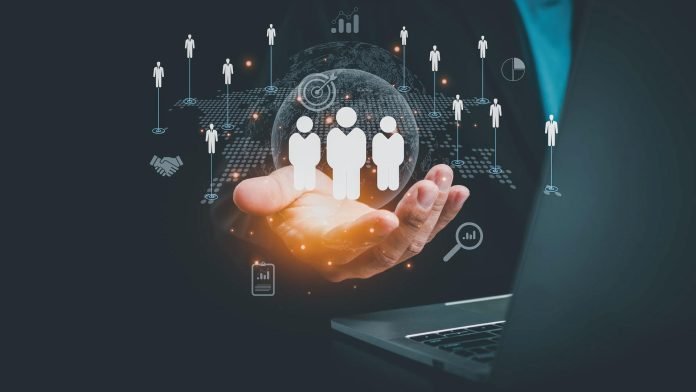Table of Contents
1. Enhancing Efficiency through Automation
2. Data-Driven Decision-Making
3. Elevating Employee Experience
4. Agility in Adapting to Change
5. Future-Proofing HR Functions
Conclusion
Due to the advancement in technology and innovation, the digital transformation process has been seen as a strategic necessity for most organizations, including the HR function. This means that instead of simply focusing on administrative tasks, which are still part of the function, the HR departments play a central role and are critical in areas of organizational responsiveness, employee interaction, and overall strategy. However, the success of HR digital transformation hinges on a crucial factor: procurement of technologies.
Tech adoption is not simply the incorporation of new systems or applications in the enterprise. It is a continuous process of implementing trends that reflect cutting-edge technologies in the functioning of the HR department, its activities, and decision-making aimed at achieving the best results for the organization. This article delves into why tech is crucial to the digital transformation of the HR function and how this leads to more productivity, flexibility, and an optimal HR environment in the future.
1. Enhancing Efficiency through Automation
Another advantage of implementing HR technology is that it can help reduce the workload of the human resources department and also free up some of their time. Typically administrative HR tasks, including payroll services, employee attendance, and benefits management, remain paper-driven and, therefore, tend to be inaccurate. This is particularly because the use of HR software solutions can help organizations cut on the time they spend doing mundane paperwork, minimize errors, and declutter important HR work so that professionals can give their best in more critical tasks.
For instance, managing the recruitment process through applicant tracking systems can greatly reduce the time spent on searching for potential candidates, setting interviews, and communicating with candidates. Likewise, performance management software can provide features that allow for prompt and frequent feedback, setting goals, and employee appraisals, which could improve the overall efficiency of the process and the quality of appraisals. Automation shifts HR from being a reactive function to one where HR professionals can work on more strategic projects, including talent management and engagement.
2. Data-Driven Decision-Making
Given that operating in today’s environment means dealing with massive amounts of information and making decisions based on evidence rather than guesswork, the role of the HR leader similarly calls for evidence-based decision-making. Implementation of HR technology aids in the increase of data collection and analysis ahead of the HR department, allowing for the use of people analytics. When implemented in HR systems, AI and machine learning assist in finding patterns, anticipating the future demand of employees, and responding to issues.
For instance, people analytics solutions can help determine employees’ turnover rates and identify possible areas of high attrition. It enables the HR factions to act with proper retention measures before employee turnover becomes a major concern. Likewise, predictive analytics can assist in forecasting talent requirements according to the growth rates of businesses and industries for better workforce planning.
In its absence, HR teams would rely on a set of disparate and isolated data points that result in a low strategic value. Use of technology in data analysis places HR departments in a strategic decision-making center in an organization, enhancing business results.
3. Elevating Employee Experience
One of the main factors that we consider when looking at engagement, productivity, and ultimately retention is employee experience. The expectations of the current generation of workers, specifically millennials and Gen Z, expect their work experience to be as good as their experiences as consumers, with easy-to-use technology, personalized communication, and immediate access to information. This is where the adoption of HR technology comes into play, as it helps in meeting these expectations.
This could be through the use of self-service portals, which enable the employees to do things such as change personal details and check pay slips, among others, without having to involve HR. This liberates administrative workload from HR teams and offers employees easy, convenient access to important information.
Furthermore, there are also tools such as employee engagement platforms and performance management software that facilitate always-on feedback, communication, and recognition. Such tools develop an environment of openness, cooperation, and ongoing enhancement, which enhances effectiveness and satisfaction.
These technologies not only improve the efficiency of the HR departments but also enhance the communication, awareness, and productivity of the employees.
4. Agility in Adapting to Change
Managers are under constant pressure to respond to changes in the global business climate to adapt quickly. Tech adoption offers the flexibility that helps HR departments adapt to new and emerging workforce requirements and practices, as well as changes in legislation.
For instance, cloud-based HR platforms are malleable and easily scalable to cater for the growth or changes in the organization’s HR activities. Cloud solutions can be scaled up or scaled down as an organization expands or contracts as a result of mergers, acquisitions, or outsourcing through or across departments, functions, employees, or regions.
Moreover, technology supports working from home, which means that the HR teams are capable of handling employees in different locations. Flexible and remote working has now become the new culture, especially after the COVID-19 outbreak; therefore, it is crucial for organizations to have the right technologies for the virtual employees they have. Minimum viable HR tech adoption guarantees that measures like onboarding, training, and performance evaluation can work in the remote or blended environment.
5. Future-Proofing HR Functions
The future of work is digital, and organizations that do not embrace HR technology are at risk of lagging behind. Adopting new technologies in HR is important for HR as a field to remain relevant, effective, and strategic for the business in the future.
For instance, the application of artificial intelligence, chatbots, and blockchain is becoming the new normal in managing the talent acquisition process, onboarding, and contract management. For organizations that are willing to invest in these technologies today, they are likely to have an upper hand in the talent market when the disruption occurs.
Another advantage of technology in the acquisition of application technology is that it allows training and professional development within the HR teams on a progressive basis. Yet in the use of technology, it is imperative that HR professionals acquire new IT competencies owing to the rising advancement in technology. It is important for HR departments to continue investing in HR technologies so that they can be prepared to handle the demands of the modern world.
Conclusion
Digital transformation is not something optional for the HR field anymore; it is a necessity, given the current state of economic competition. However, failed digital transformation attempts are sure to follow, which means that organizations are yet to embrace advanced HR technologies. Showcasing how robots improve efficiency over manual labor, facilitating reasonable decisions through analytics, and engaging talents are pivotal to the HR transformation process. Hence, the adoption of technology can make the HR department serve a strategic role in enhancing the efficiency and profiting of the business in the future.













